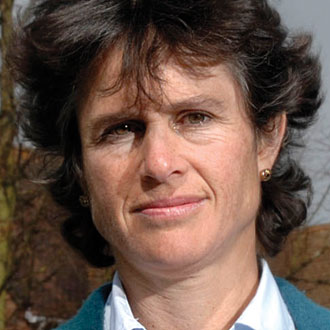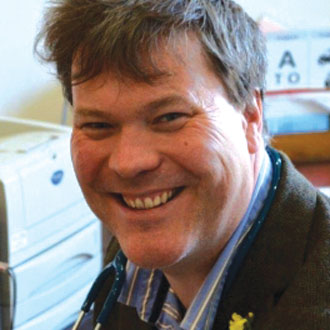Focus On May 2016 SUO
An overweight male patient who is in his 40s and chain-smokes has a new diagnosis of type 2 diabetes, which you need to discuss with him. He takes statins.

Dr Farah Jameel
Many patients associate a diagnosis of diabetes with having to poke themselves forever with needles. Some may have lost family members to diabetes complications. Others may worry about how the diagnosis might affect and interfere with their lifestyle or their profession. Go easy on them.
Explore what the patient understands about diabetes – for example if he knows anyone with it. Use easy words to explain the illness. For example: ‘Diabetes is a condition that causes a person’s blood sugar level to become too high’. Explain that there are two types of diabetes, that type 2 is the most common, and explain how the body’s insulin levels can stop the body using sugar for energy.
You may also like to check he understands how his diet and activity levels affect his weight.
The patient may want to know what his options are. He might question the diagnosis. He may even ask for a retest. Having a general conversation about lifestyle, then talking the patient through risk factors and treatment options before finalising the next steps is sometimes helpful.
Try to draw out things that he enjoys and find a way for him to continue to incorporate these into his lifestyle. But also make the connection between weight, smoking, statins and diabetes in order to make him aware of the increased risk he is exposing himself to. Ensure he understands that diabetes is a risk factor for heart disease and can cause complications in the kidneys, eyes and peripheral nervous system over time. At the end of the appointment, signpost him to online patient information, communities and structured education sessions on diabetes.
Dr Farah Jameel is a sessional GP and deputy chair of the BMA Equality and Inclusion committee

Dr Fiona Cornish
Start by asking the patient what he understands about diabetes, so that you can pitch your explanation. A common myth he might believe is that type 2 is a ‘mild’ form of diabetes. It is vital to explain that if diabetes is not properly controlled, any case can lead to complications. He might also assume that people with diabetes eventually go blind, so explain that patients can reduce the chances of this by controlling blood pressure, glucose and lipid levels, hitting a healthy weight and, importantly for him, quitting smoking.
If you have a strong relationship with your patient, you could go for some shock tactics with a worst-case scenario. Explain that diabetes can lead to strokes, heart attacks and amputations, but follow this with the positive message that he can prevent these complications if he takes control. Diabetes can reduce your healthy life expectancy – another good reason to adopt a conscientious approach to managing his diabetes.
This would be a good moment to plug smoking cessation. Use motivational interviewing techniques to help him see the benefits of changing his lifestyle. Offer smoking cessation and structured diabetic education sessions. Avoid adopting a strict manner, and don’t give too much information in one session.
Acknowledge that managing diabetes can seem demanding. Offer help, for example from the practice’s diabetes nurse, and suggest that he brings his partner or a friend to support sessions.
Dr Fiona Cornish is a GP in Cambridge and a former president of the Medical Women’s Federation
Female patient in her 50s, a smoker, has had a suspicious chest X-ray, which you need to discuss with her. Her symptoms are compatible with a lung cancer diagnosis.

Dr Trevor Thompson
Before meeting the patient, study her record. Find out the context of the consultation: you need to know if the possibility of cancer was discussed before the referral (which colleagues will certainly have noted).
When the patient arrives, discuss the results and check out her expectations. Be sensitive, but direct: ‘the X-ray shows changes that could mean that you have cancer’. You can show the patient the report and even print it out for her to take away, as some patients stop listening after they hear the word ‘cancer’.
You may find that the diagnosis isn’t quite as much as a surprise as one might expect. As a smoker, she will almost certainly have had suspicions. The issue of her current smoking is not something to address now – the last thing she needs is a reminder that she has inflicted this terrible predicament on herself. If she asks, ‘was it the smoking?’ then tell her most people with lung cancer are smokers, but that you can have lung cancer without it.
Sometimes people react very badly and become speechless and it becomes impossible to continue the consultation in a meaningful way. When this happens, we hope they have someone with them in the consulting room or in the waiting room. If not, insist that they take a seat, wait for a friend to arrive, and accept some tea and TLC from the reception staff.
In every case, try to dispense hope along with the bad news: even in the worst of scenarios there is always hope. For instance, say that there is still a possibility that the shadow on the X-ray is caused by an infection and not a cancer.
Dr Trevor Thompson is a GP and reader in health education, University of Bristol

Dr Matt Burkes
Bring the patient in for a face-to-face consultation and either put aside extra time or have it at the end of your surgery.
There is no perfect way to deliver bad news, but with every patient strive for ‘sensitive honesty’. Be aware of the shock or upset you are causing but be clear about your suspicions.
In this case, the diagnosis is not guaranteed, but be careful not to fall into the common trap of providing false reassurance. A warning shot can be helpful: for example, ‘The X-ray has some features that are worrying and I wanted to see you face to face to discuss this.’
Sometimes patients take the initiative from here and ask you directly what is going on. Other patients may be oblivious to the potential diagnosis, or in denial. Discuss the results in easily digestible chunks. Avoid jargon. Outline the findings and your fears.
Check that you are being understood; if not, go back and try an alternative way of explaining.
Acknowledge any distress, grief and fear. Reactions may surprise you: some patients already suspect the diagnosis; some may be angry with either themselves or with you and the medical profession if they feel the diagnosis should have been made earlier. Some patients are initially calm but break down afterwards. Check if they are okay to get home or if they would rather you called someone on their behalf. You could offer to discuss things with the patient’s loved ones if she would find this useful.
Outline the onward steps in your patient’s diagnostic journey: in this case a two-week referral to the lung team and CT scan and maybe a blood test. Advise the patient that she is welcome to schedule a review appointment with you. Discussions about quitting smoking should not form part of this initial consultation – address them, if required, at a follow-up appointment.
Dr Matt Burkes is a GP in Chichester, West Sussex
An elderly patient in her 80s has advanced cancer. She is now stopping treatment, and you have a consultation with her to discuss end-of-life care.

Dr Liz Moulton
Before the consultation, go through the patient’s records and think about the wider picture. What do you know about the family, and are others involved (a district nurse, palliative care team)? Ensure you have enough time for the consultation.
Consider visiting the patient at home – the advantages being that she is on ‘home territory’, you can get a sense of the practicalities (stairs and bathrooms), interruptions are less likely and it is easier to take your time.
To start the consultation, choose an open question and follow the patient’s lead. Asking: ‘How are you doing?’ or ‘How have things been lately?’, allows the patient to talk. If she denies problems, discuss recent hospital visits and what was said. You may, in rare cases, need to check that the patient knows treatment is being stopped.
How far you can get today will depend on the patient – be sensitive and responsive throughout, giving information in bite-sized amounts and trying to be sure that the patient has understood what is being said. Honesty is important but it is crucial not to take away hope.
Three key topics to cover – perhaps over several consultations – are preferred place of dying, symptom management, and who to contact out of hours. A DNACPR will need to be discussed as soon as reasonably possible but not necessarily straight away.
If a carer (for instance, her husband or daughter) is present, include them in the consultation (‘What do you think?’; ‘Anything to add?’). Remind them that you are there for them too.
End by arranging the date of the next consultation, and asking the patient to undertake specific tasks to prepare, for example, ‘I’ll come to see you again on Tuesday. You may well have questions: make a list and we can go through them.’
Dr Liz Moulton MBE is a freelance GP and consultations skills teacher in West Yorkshire. Her book The Naked Consultation is now on its second edition
Dr Mohammed Saqib Anwar

Preparation is key. Think carefully about where and when this conversation should take place and who else may need to be present. This would very much depend on the individual patient, her physical status and who she wanted to be around. It is important to ensure that family members and loved ones, where agreed, are able to be involved in key decisions and considerations but remain mindful of the need to protect the patient’s confidentiality and dignity throughout.
Prior to meeting, spend some time thinking about the key areas that need to be covered, such as ascertaining the patient’s views on ceilings of treatment, resuscitation orders, advanced decisions to refuse treatments and preferred place of care at the end of her life.
Most CCGs have now produced a template care plan that can aid doctors and ensure they cover all relevant aspects, which you could use. That said, this should be used with caution and my advice to all doctors is to not be bound by them and not to turn it into a tick-box exercise. The commonest deficiency is where doctors get caught up in completing the paperwork.
As for the actual conversation, it is important that you involve the patient and her family in as much of this as possible. Sensitively ask open questions that will help you understand their views on the key areas. Make sure you cover what is important to them. This helps with creating a sense of ownership of the plan and can help immensely with managing of expectations of all concerned.
Remember that discussions of this nature need to be measured and paced appropriately, so they do not have be done in one sitting. If the situation allows, it is better to give people time to think, absorb and reflect on the discussions before making any firm decisions.
Dr Mohammed Saqib Anwar is a GP partner in Oadby, Leicestershire
Focus On related articles
How to use life-coaching skills in your
How to tackle ten challenging patients
Pulse October survey
Take our July 2025 survey to potentially win £1.000 worth of tokens













